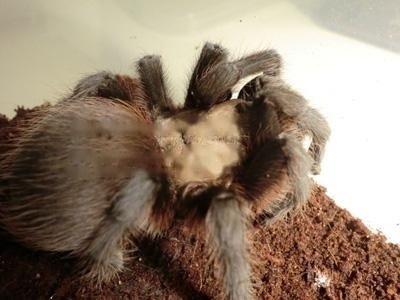
Texas Brown Tarantula
Adult body length is 13-14 cm, suitable temperature is 28-30 ℃, and suitable humidity is 65%. It is recommended to use moist peat, coconut brick and clay as the substrate. It tak
English name: South African flat stone scorpion
Origin: most of South Africa
The flat stone scorpion (Latin name: Hadogenes troglodytes), also known as the South African flat stone scorpion, is distributed in most areas of South Africa. Appears to be quiet but responsive and easily nervous.
The suitable temperature is 25~30℃, and the suitable humidity is 40%~60%. Juveniles can be fed needle crickets, mealworms, and adults can be fed crickets and even suckling rats. They are the heaviest scorpion family. species, scorpions belonging to the genus of large rocky mountainous areas, the feeding space should not be too small and dense, one A large pet crate will do. The substrate can be reptile sand or freshwater sand, but if you want to be close to the original living environment, it is better to choose small stones. A piece of old wood is placed next to it, and one-third of the old wood is inserted into the soil and sand, exposing the part with many holes for it to hide. Although the environment in which they live is dry, a water basin is also required, which is mainly used to adjust the humidity level in the box.
Chinese name: Flat stone scorpion
Kingdom: Animalia
Distribution area: most of South Africa VS Africa, Tanzania
Classification: three kindsFood: larvae feed needle crickets, mealworms. Adults feed crickets and even crickets It's a suckling rat.
They are ScorpionHeaviest Variety belongs to the genus of large rocky mountain scorpions. The feeding space should not be too small and dense, each with a large pets a breeding box is fine. The substrate can be reptile sand or freshwater sand, but if it is close to its original living environment, it is better to choose small stones, with a piece next to it. Chenmu is good. Only one-third of the old wood is inserted into the soil and sand, and the part with many holes is exposed for hiding. Although the environment in which they live is dry, they also need a water basin, which is mainly used to adjust the humidity in the box. .
Food: Feeding needle crickets to larvae , mealworms. Adults feed crickets and even suckling mice.